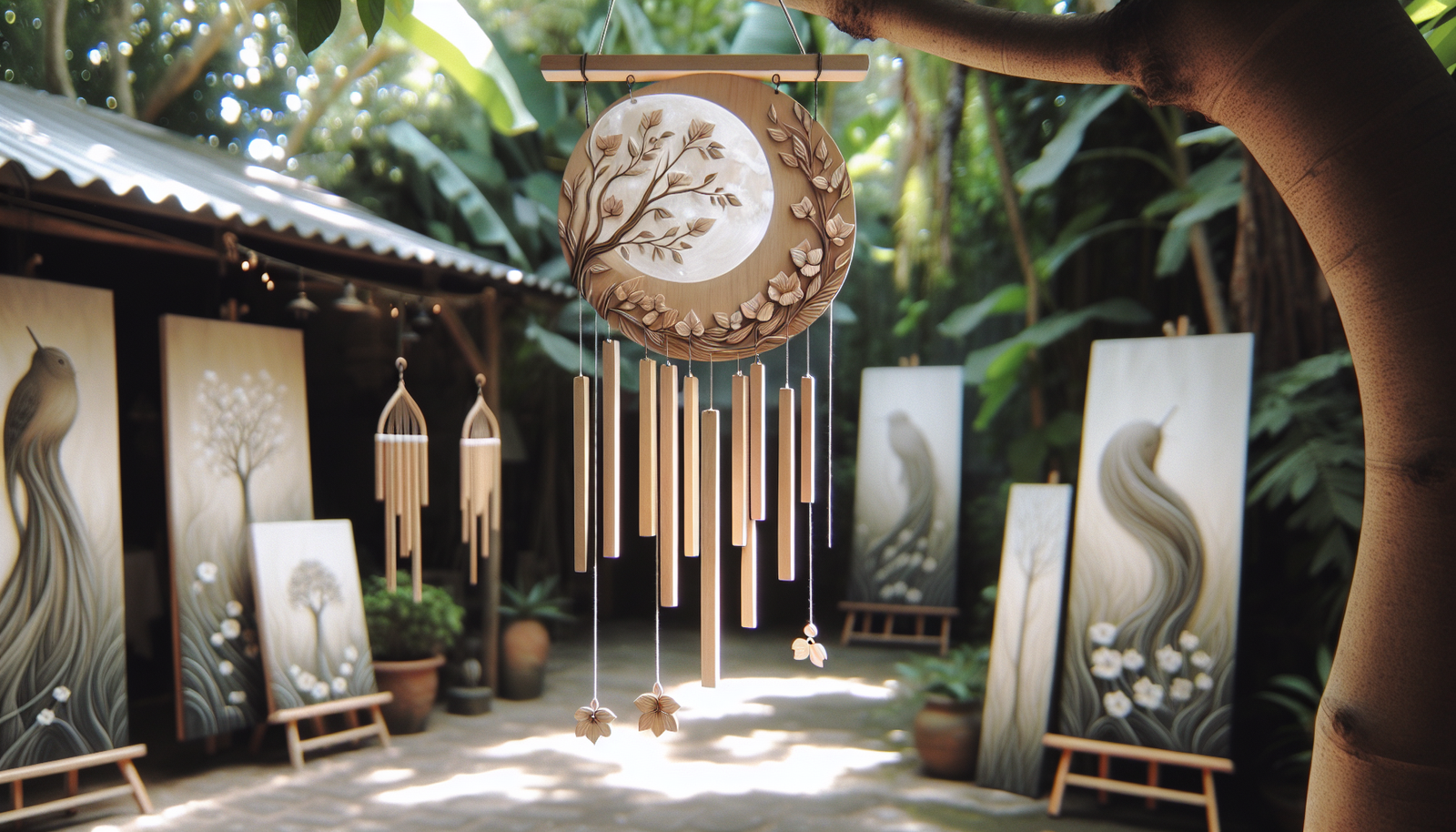Discover Garden Art

Get ready to embark on a journey of artistic discovery as you step into the world of Garden Art. Whether you’re a seasoned art enthusiast or just beginning to explore the beauty of visual expressions, Garden Art offers a unique and soulful experience. From the tranquil Garden Stroll to the powerful Ancestors Garden, these art pieces bring nature and culture together in captivating and thought-provoking ways. Join us as we delve into the world of Garden Art and unlock the stories that await your exploration.
Discover Garden Art
Introduction to Garden Art
Garden art is a beautiful and unique way to enhance your outdoor space. It adds a touch of creativity and personality to gardens, patios, and other outdoor areas. Whether you have a large yard or a small balcony, there are endless possibilities for incorporating garden art into your space.
History of Garden Art
Garden art has a rich history that dates back centuries. It has evolved and changed over time, influenced by different cultures and artistic movements. From ancient gardens to modern installations, garden art has always played a significant role in outdoor design.
In ancient times, garden art was often used to depict religious or mythological figures. These sculptures and statues were placed strategically throughout the gardens to create a sense of awe and wonder. In medieval and Renaissance gardens, garden art took on a more decorative and ornate style, with elaborate fountains, mazes, and geometric patterns.
The influence of Asian garden art can be seen in the use of Zen gardens and bonsai trees. These gardens emphasize simplicity and harmony with nature, using carefully placed rocks, sand, and plants to create a sense of tranquility.
In modern and contemporary garden art, artists experiment with different materials and styles. Sculptures made from metal, wood, and glass are popular choices, as are abstract and functional pieces.
Different Styles of Garden Art
Garden art comes in many different styles, allowing you to choose pieces that reflect your personal taste and the overall theme of your outdoor space. Here are a few popular styles of garden art:
-
Traditional Garden Art: Traditional garden art includes classic sculptures, statues, and fountains. These pieces often have a timeless quality and can add a touch of elegance to any garden.
-
Abstract Garden Art: Abstract garden art focuses on shapes, colors, and textures rather than realistic representations. These pieces can be bold and eye-catching, adding a contemporary feel to your outdoor space.
-
Sculptural Garden Art: Sculptural garden art includes three-dimensional pieces that are meant to be viewed from multiple angles. These sculptures can be made from various materials and can range in size from small to monumental.
-
Functional Garden Art: Functional garden art serves a purpose beyond aesthetics. This can include things like benches, planters, and trellises that are designed to be both practical and visually appealing.
-
Eclectic Garden Art: Eclectic garden art combines different styles and materials to create a unique and eclectic look. These pieces are often one-of-a-kind and can add a playful and whimsical touch to your garden.
Materials Used in Garden Art
Garden art can be made from a wide range of materials, each offering its own unique qualities and characteristics. Here are some common materials used in garden art:
-
Metal Garden Art: Metal garden art is durable and can withstand the elements. It can be made from materials like iron, aluminum, and steel, and can be shaped and molded into various forms.
-
Wooden Garden Art: Wooden garden art adds a natural and rustic look to outdoor spaces. It can be carved, painted, or left unfinished for a more organic feel.
-
Stone Garden Art: Stone garden art has a timeless and elegant quality. It can be carved, sculpted, or used in its natural state to create beautiful and enduring pieces.
-
Glass Garden Art: Glass garden art adds a touch of color and elegance to outdoor spaces. It can be blown, fused, or stained to create unique and vibrant pieces.
-
Recycled Materials in Garden Art: Many artists use recycled materials to create garden art, giving new life to old objects. This can include things like repurposed metal, wood, or glass.
Famous Garden Art Installations
There are many famous garden art installations around the world that have captivated visitors with their beauty and ingenuity. Here are just a few examples:
-
The Garden of Cosmic Speculation: Located in Scotland, this garden is known for its unique and otherworldly landscapes. It incorporates various sculptures and structures that represent scientific and mathematical concepts.
-
Voyageur Sculpture: This monumental sculpture in Canada depicts a group of figures paddling in a canoe. It serves as a symbol of exploration and adventure, and has become an iconic landmark.
-
Gardens by the Bay: Located in Singapore, this award-winning garden features futuristic and sustainable designs. It includes structures like the Supertree Grove, which is a collection of towering vertical gardens.
-
The Wave Organ: Situated in San Francisco, this interactive art installation uses the natural movement of the tides to create sounds. It is made up of a series of pipes and channels that produce melodic tones when the waves pass through.
-
The Blue Trees: This ongoing environmental art project by Konstantin Dimopoulos involves painting trees blue to raise awareness about deforestation. The vibrant blue color creates a striking contrast against the natural surroundings.
How to Incorporate Garden Art in Your Outdoor Space
Incorporating garden art into your outdoor space can be a fun and creative process. Here are some tips to help you get started:
-
Choosing the Right Garden Art for Your Space: Consider the size and style of your outdoor space when choosing garden art. A large sculpture might be the focal point of a spacious garden, while smaller pieces can be displayed in pots or on walls in a smaller space.
-
Placement and Display of Garden Art: Experiment with different locations and arrangements to find the perfect spot for your garden art. Consider how it will interact with plants, sunlight, and other elements of your outdoor space.
-
Lighting and Garden Art: Use lighting to highlight and enhance your garden art. Soft spotlights or string lights can create a magical atmosphere in the evening, allowing your garden art to shine even after dark.
Benefits of Garden Art
Garden art offers a multitude of benefits beyond its aesthetic appeal. Here are some of the advantages of incorporating garden art into your outdoor space:
-
Enhancing the Aesthetics of Your Garden: Garden art can transform an ordinary outdoor space into a visually stunning and captivating garden. It adds color, texture, and a sense of style to the overall design.
-
Creating a Focal Point: Garden art can serve as a focal point, drawing the eye and creating a sense of visual interest. It can anchor a space and provide a focal point for landscaping around it.
-
Adding a Sense of Personality and Individuality: Garden art is a form of expression and can reflect your unique style and personality. It adds a personal touch to your outdoor space and can be a conversation starter.
-
Promoting Relaxation and Tranquility: Garden art, especially pieces that incorporate elements of nature, can create a calming and peaceful atmosphere. It can be a place for contemplation and meditation, providing a retreat from the busyness of daily life.
-
Encouraging Wildlife and Nature: Certain types of garden art, such as bird feeders, birdbaths, and insect hotels, can attract wildlife to your outdoor space. This encourages biodiversity and creates a harmonious relationship between humans and nature.
Garden Art as a Form of Self-Expression
Garden art is not just about aesthetics; it is also a powerful form of self-expression. Here are some ways in which garden art can be a means of artistic expression:
-
The Artistic Expression in Garden Design: Designing a garden is a creative process that allows you to express your unique vision and style. Garden art can be an extension of this artistic expression, adding depth and character to your overall design.
-
Symbolism and Meaning in Garden Art: Many pieces of garden art have symbolic meanings behind them. They can represent ideas, emotions, or stories, allowing you to communicate a deeper message through your garden.
-
Creating a Narrative Through Garden Art: By carefully selecting and arranging different pieces of garden art, you can create a narrative or tell a story. This can be done through the use of themes, color schemes, or placement within the garden.
Garden Art Festivals and Events
Garden art festivals and events provide an opportunity to immerse yourself in the world of garden art and connect with other art enthusiasts. These events showcase a wide range of garden art styles and offer a chance to see and purchase unique pieces. Some notable garden art festivals include the Chelsea Flower Show in London, the International Garden Festival in Canada, and the Melbourne International Flower and Garden Show in Australia.
Where to Buy Garden Art
There are numerous places where you can buy garden art, depending on your preferences and budget. Here are some options to consider:
-
Local Garden Art Stores: Visit local garden centers or home decor stores that specialize in outdoor art. These stores often have a variety of garden art pieces available for purchase.
-
Online Garden Art Marketplaces: Explore online marketplaces that feature a wide selection of garden art from various artists and sellers. These platforms offer convenience and the ability to browse and compare different options.
-
Art Galleries and Museums: Some art galleries and museums may have garden art exhibitions or feature artists who create outdoor sculptures. These establishments often have pieces for sale or can connect you with artists.
-
Artist Studios and Exhibitions: Visiting artist studios and exhibitions allows you to see the artwork in person and meet the artists behind the pieces. Many artists also sell their garden art directly from their studios or at art fairs.
-
Commissioning Custom Garden Art: If you have a specific vision in mind or want a truly unique piece, consider commissioning a custom garden art piece from an artist. This allows you to collaborate with the artist to create something tailored to your taste and space.
In conclusion, garden art is a wonderful way to add beauty, creativity, and individuality to your outdoor space. Whether you prefer traditional sculptures, abstract pieces, or functional art, there is something for everyone. Explore the different styles, materials, and installations of garden art to find inspiration and create your own garden oasis.










